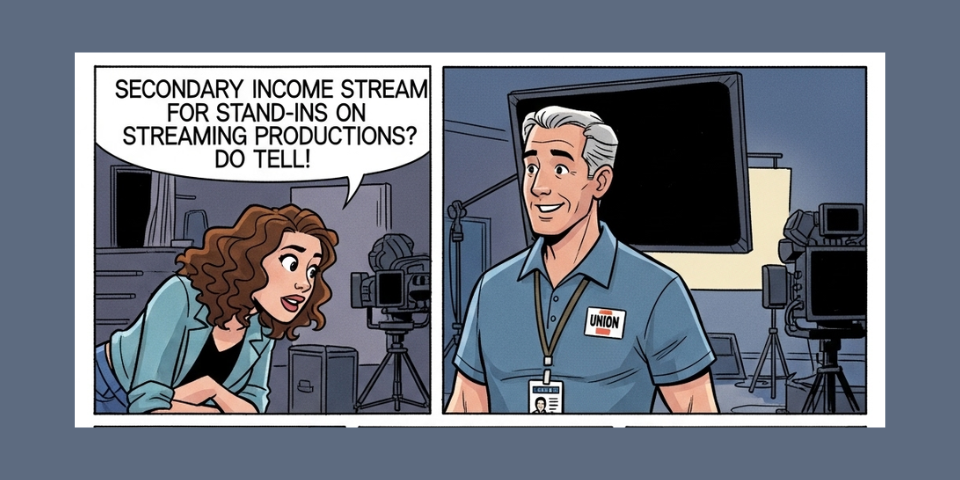When you’re standing in, you usually watch marking rehearsal. Marking rehearsal is your first time to see the blocking for your actor. Oftentimes, marking rehearsal is your only time to see the blocking for your actor. Typically you get to see only one rehearsal. Suddenly, you’re asked to do the blocking exactly! Standing in can be pretty demanding in this respect.
Even the shortest scene with a cross or two can amount to a number of blocking notes you may need to take. To give you a sense of the number of things you may have to recall from a marking rehearsal, below is a list of some of the things I’m watching. You aren’t just watching the blocking from point to point; there are a number of other things you’re watching, too!
- Number One: Watch where your actor walks. A camera assistant will place marks, but it’s important for you to note what path your actor took to get to those marks.
- Watch which ways your actor turns. If your actor pivots in the scene, note if your actor turns clockwise or counterclockwise (anticlockwise). I write in my notes “cl” or “ccl” to designate which way my actor turned.
- Watch where your actor stands relative to the other actors. Again, marks may determine this orientation, but when your actor is walking, those positions may be less obvious. Was your actor following the other actor? leading? Were the actors staggered or walking in a straight line?
- Listen for the timing of the blocking with the lines. That is, know on what lines your actor enters, moves, gestures, leaves, etc. This can be especially important if you’re on a set that has you do the lines.
- Note what hand your actor uses for handling props, opening and closing doors, etc. I write in my notes “rh” or “lh” to designate whether to hold a prop in my right hand or left hand. And don’t forget: Sometimes props can change hands!
- Similarly, note which doors your actor uses when entering and exiting. Sometimes your actor is walking through double doors and favors one door over another.
- Note the speed your actor does the blocking. Relative speed may be more important than actual speed. That is, it may be more important to know that your actor walked faster than the other actor in the scene, as opposed to knowing the actual speed your actor walked.
- Watch your actor’s posture. Your actor may sit slouched or posture-perfect, with leg crossed or arms folded. Note these things. If you’re lying in for an actor in a bed, it may be helpful to note where your actor’s head hits the pillow so that you can best match the actor’s actual position.
- Similarly, note your actor’s height. Sometimes the camera department will want to know how close in height you are to your actor. (I often try to figure out my actor’s height before marking rehearsal. Sometimes I ask other stand-ins for what they can tell about any height differences.)
- Watch how high, low, wide, etc., your actor gestures. Sometimes these things will be important.
- When your actor hugs another actor, pay attention to where your actor’s head goes. Does it go to the right or to the left of the other actor’s head?
Sometimes I’ll pay attention to color cover, noting what buttons may be buttoned or unbuttoned on a piece of clothing. I also might make note of when my actor drinks, how he pours a drink, and other tiny business. Usually I refine my understanding of these tinier details after the setup is complete and my actor is in first-team rehearsal.
In takes, blocking often changes and evolves, so I watch the monitors and take notes as to what is now going on so that when I step back on set, the other crew don’t have to tell me what is new or different.
Lots of things to watch! Is there anything you watch in marking rehearsal as a stand-in? How do you take it all in? Feel free to share in the comments below.






Leave A Comment